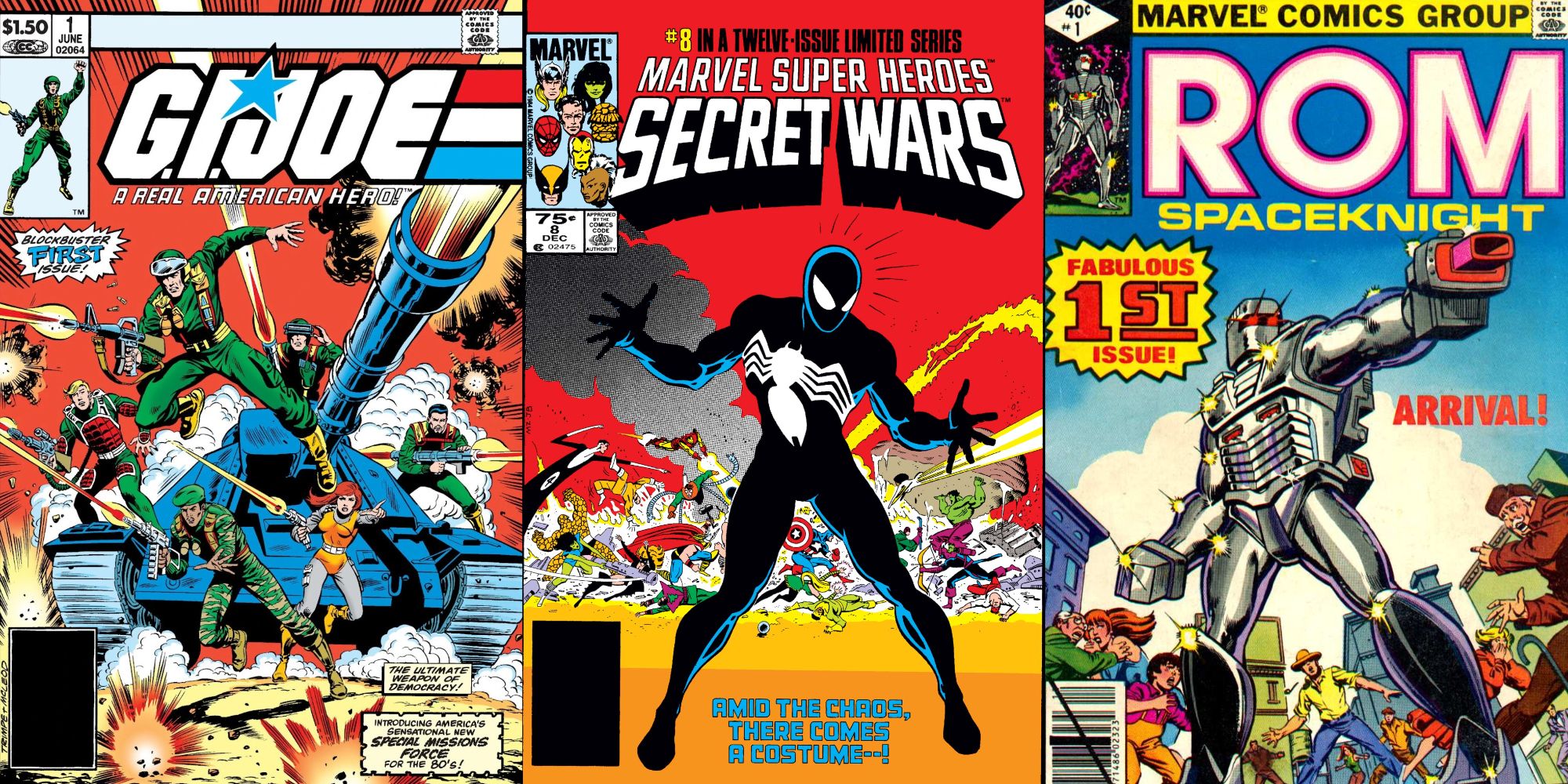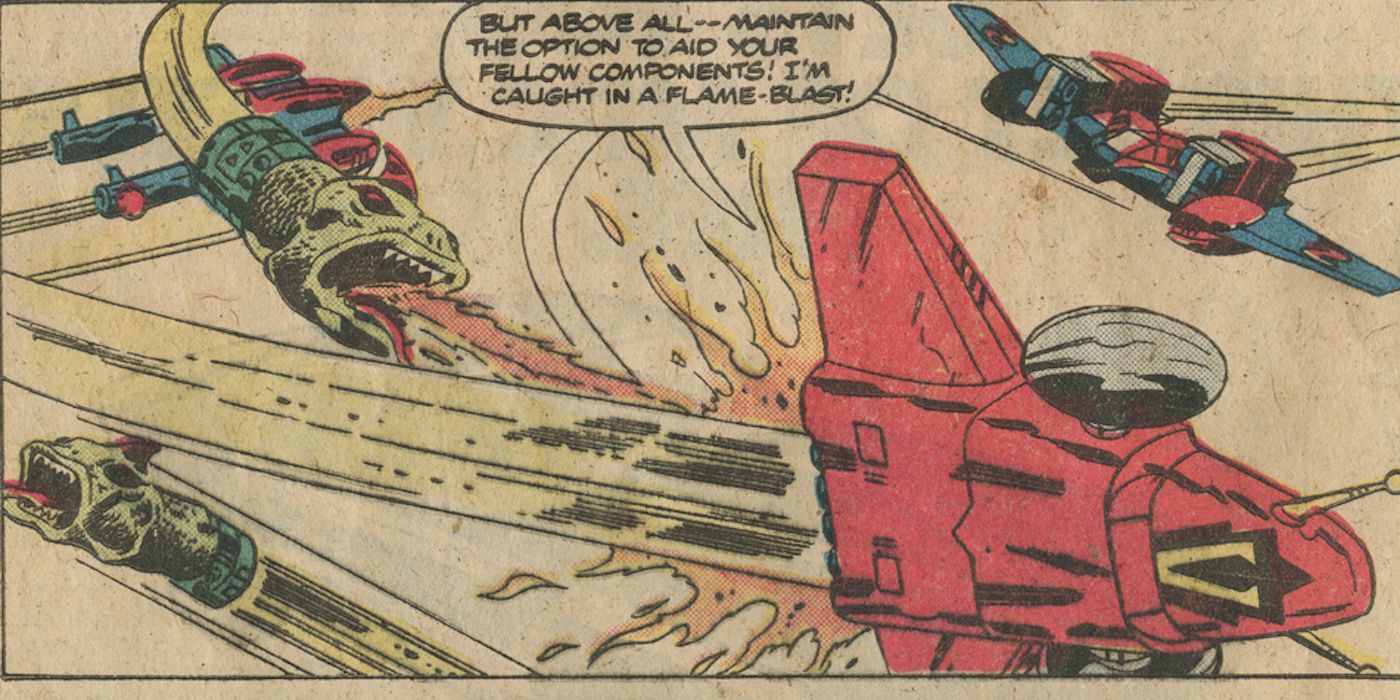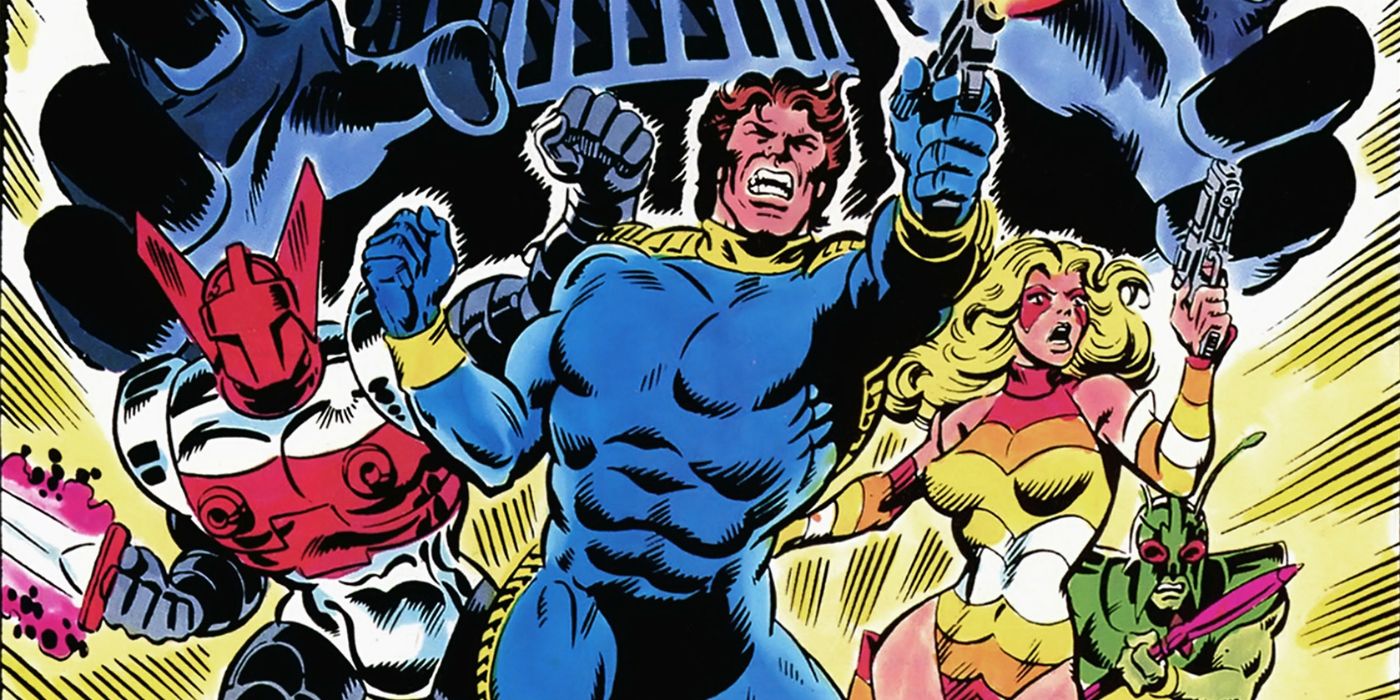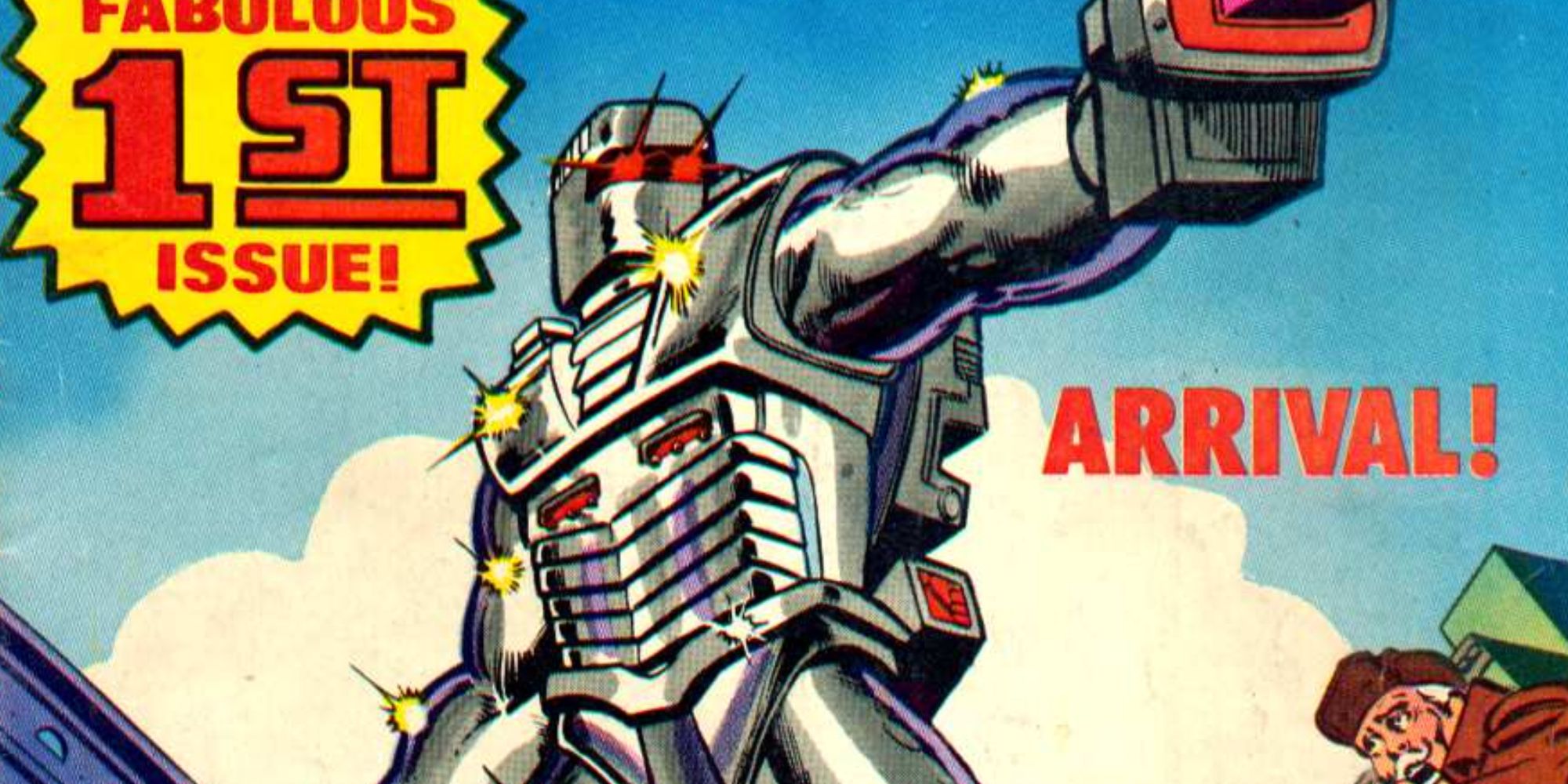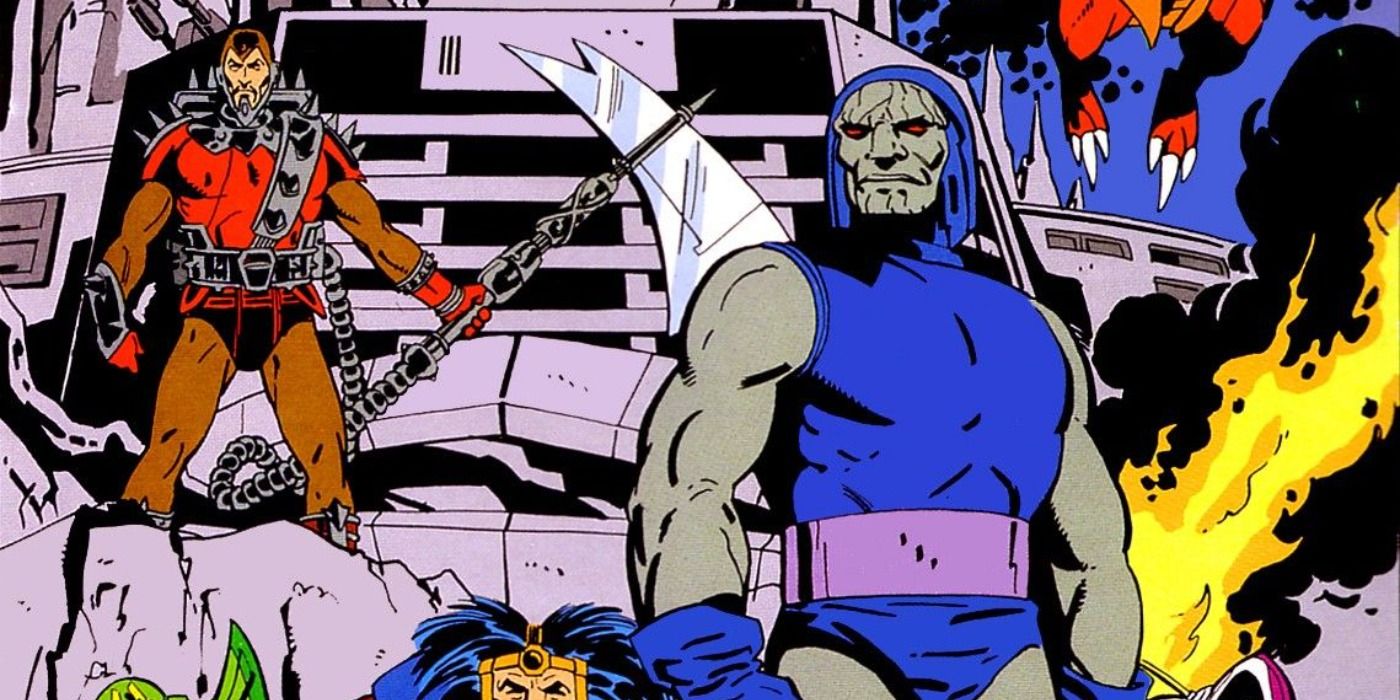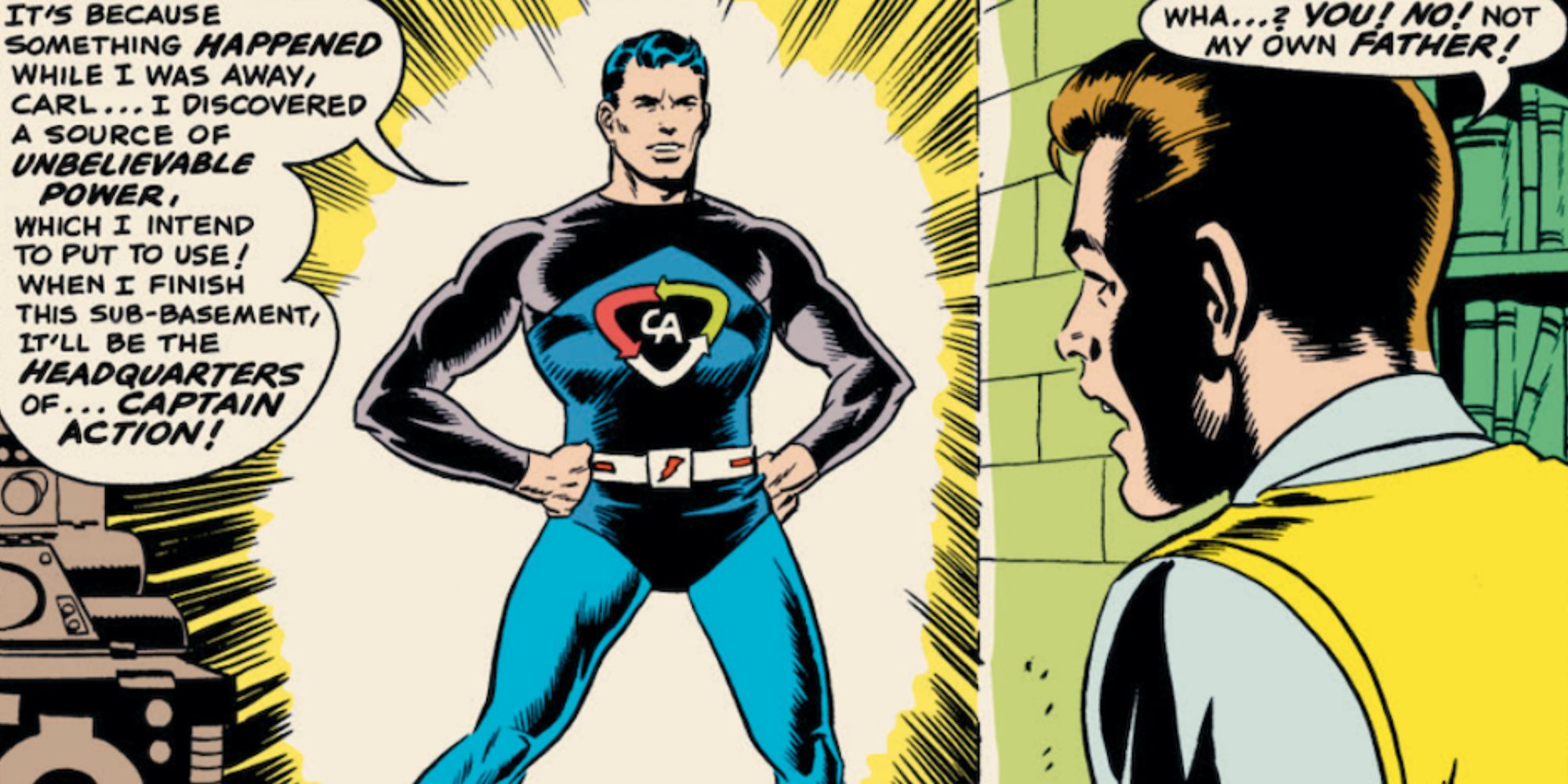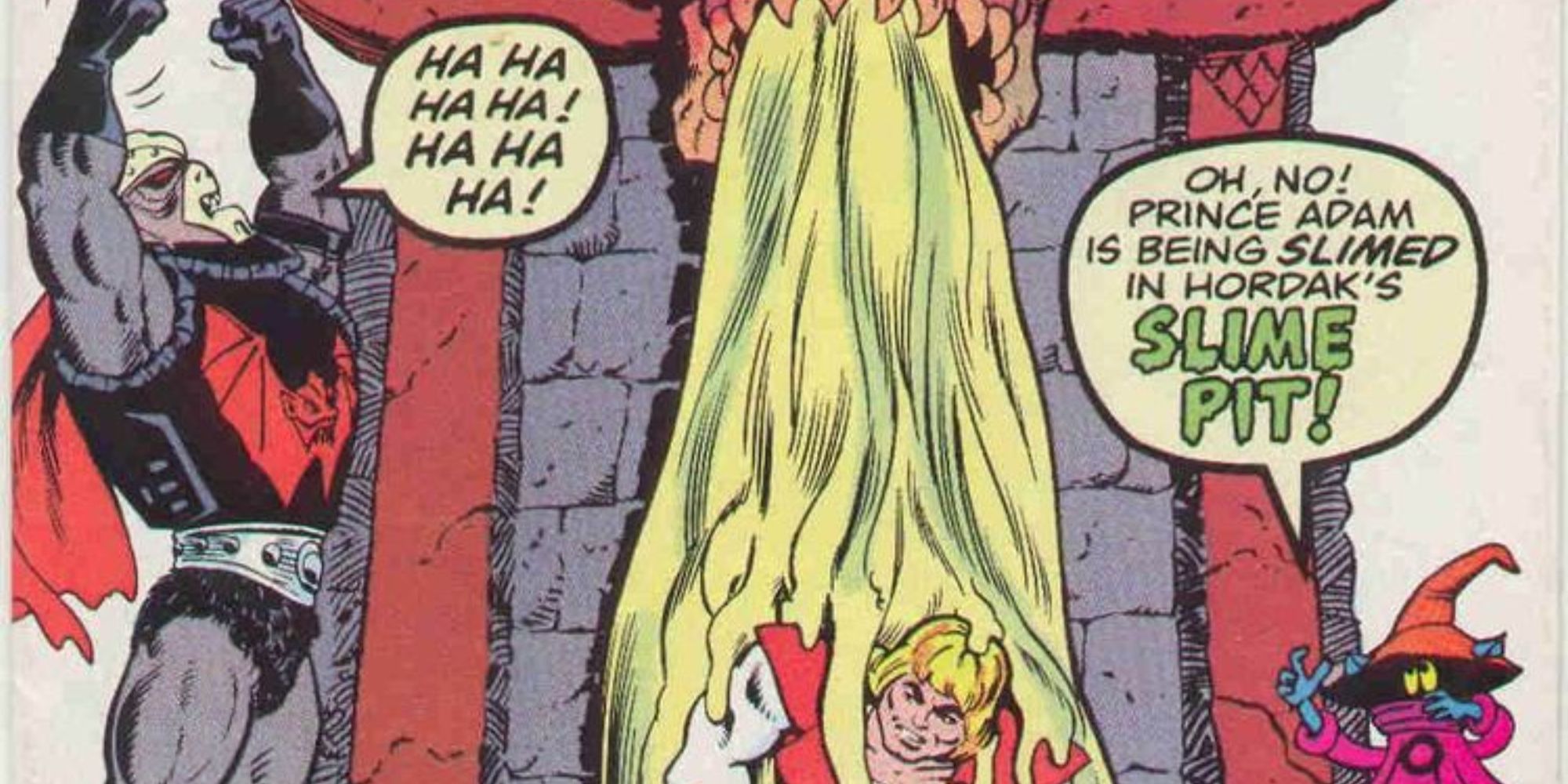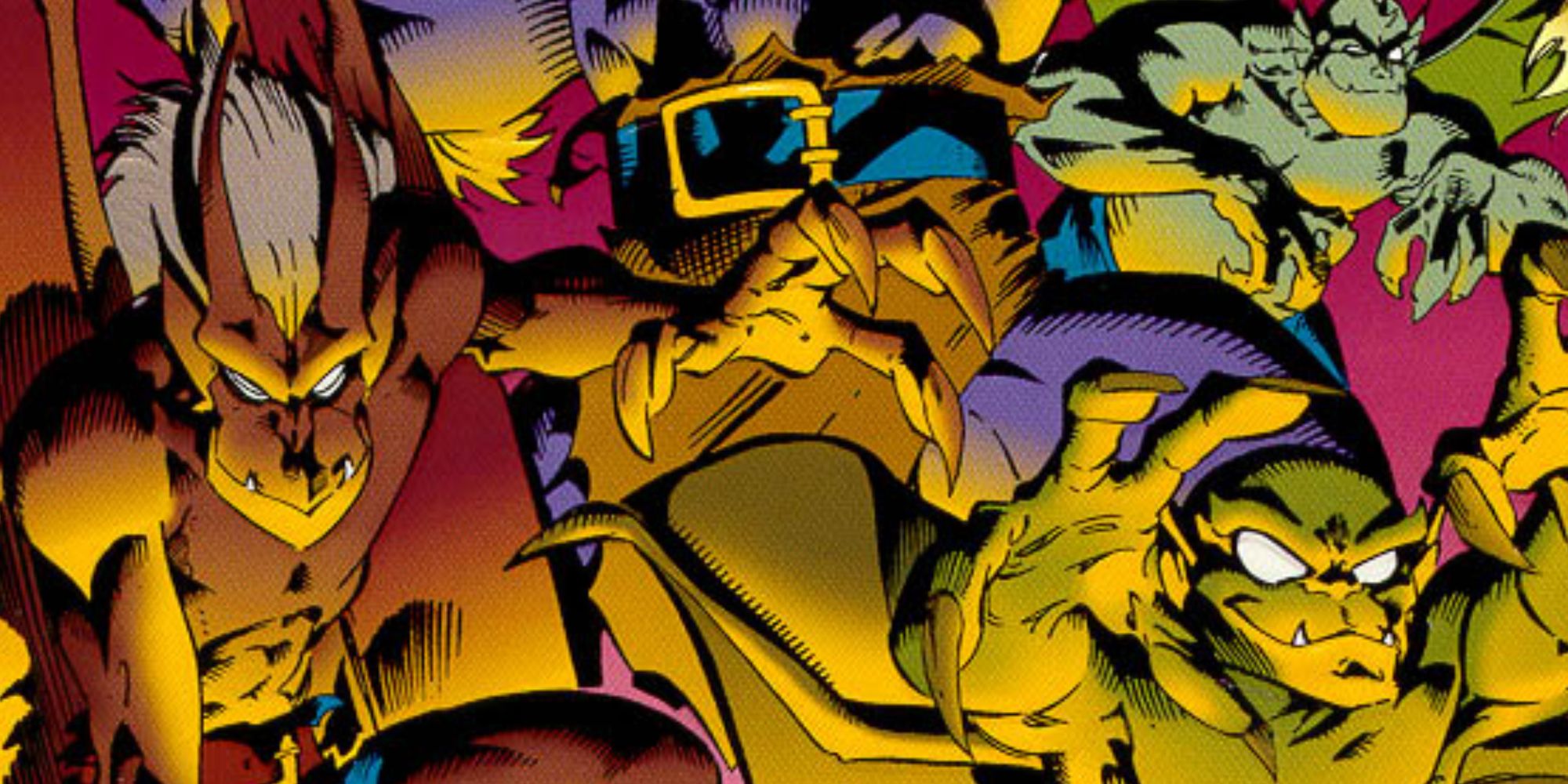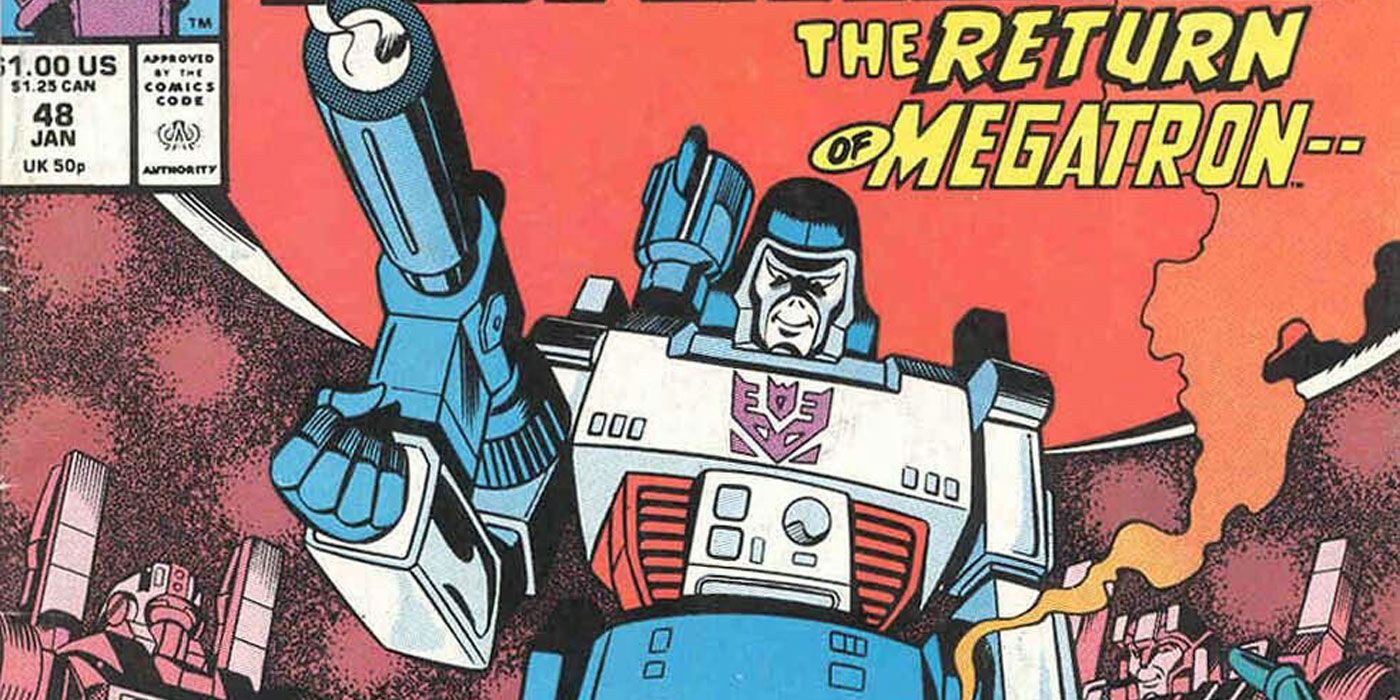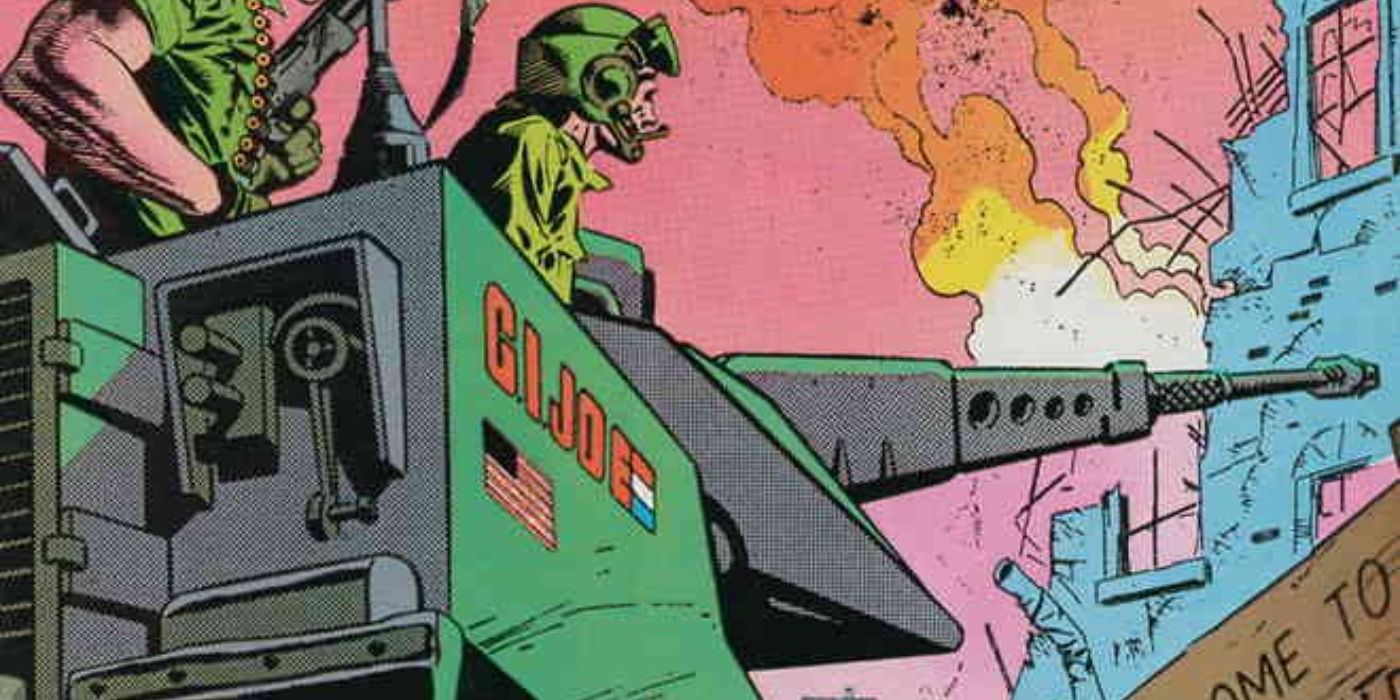She-Hulk: Attorney At Law sees the supervillain Titania steal the hero's name and license everything from it. She didn't make She-Hulk toys, though it wouldn't be unusual given comic books' relationship with toy lines. Many great comics from Marvel, DC, and other publishers drew inspiration from iconic toylines like Transformers and G.I. Joe.
Marvel Comics experienced massive success in the 1980s with its licensed comics, fully integrating them into the main Marvel Universe. That made for awkward revisionist history later once the rights expired, but the comics continue to influence the toys today, which in turn influence modern comics based on the toys from publishers like IDW.
Shogun Warriors
Licensed comics date back to the Golden Age of Comics, but Marvel really kickstarted the idea of basing them on toys with Shogun Warriors. Marvel introduced the series in 1979, based on the Mattel line featuring giant robots. With a fun story and great action, this comic book set the stage in many ways for the major successes to follow.
These toys all originated in Japan and Mattel imported them, blending together characters from various sources in live-action and anime. The characters crossed over with numerous Marvel superheroes at the time, including the Fantastic Four, who were on hand to observe the Shogun Warriors' destruction in their final issue.
Micronauts
Marvel continued their connection to imported Japanese toys with Micronauts in 1979. Mego brought over these toys from Takara, the same manufacturer of many original Transformers toys. Microman became Micronauts in the United States, creating a new and compelling backstory in the Microverse that showed how powerful a tool comics could be in creating toys.
The comic enjoyed a long run into the 1980s and the characters crossed over with many Marvel characters. While the 1983 The X-Men and the Micronauts miniseries likely doesn't count among the best X-Men comic book storylines ever, it's evident of the toy line's success.
Rom: Spaceknight
For a toyline that consisted of just one toy, Rom The Spaceknight proved very successful in comics. The Rom comic ran for several years at Marvel and built elaborate mythology around the character that remains part of the broader Marvel Universe to this day. Concepts like the Dire Wraiths, his villains, continue to appear in modern comics.
Rom himself proves complicated thanks to rights issues. Parker Bros. and later Hasbro owned the character, only licensing him to Marvel, but Marvel created virtually the entire mythology around him. This material came largely from Bill Mantlo, who comic book fans know created Rocket Raccoon.
Super Powers
By the mid-1980s, toy-based comics experienced huge success. This led to DC Comics teaming directly with Kenner to produce a toy line and corresponding comic book called Super Powers. Legendary comic book creator Jack Kirby worked on the initial miniseries, creating art that put this comic book a notch above the rest.
Kirby returned to the iconic characters he created for the New Gods like Darkseid, giving the relatively obscure characters a new spotlight. The comic book took place outside regular DC Comics continuity at the time and focused as mostly on the toys Mattel invented for the line.
Captain Action
G.I. Joe produced a highly successful comic book for Marvel in the 1980s, but the toy line actually began in the 1960s. Its chief rival, Captain Action from Ideal Toys, spawned a comic from DC in 1968. The comic book ran for only five issues but featured art from legendary creators. Wally Wood and Gil Kane, among the best Batman artists ever, contributed to the comic and its memorable art.
DC Comics completely changed the toy's central conceit, changing into other people, since some characters the hero changed into were Marvel icons like Spider-Man.
Masters Of The Universe
DC introduced the He-Man franchise from Mattel into comics in 1982 but the toys arguably got their best showcase from Star Comics. Masters Of The Universe debuted from Marvel's kid-focused imprint Star in 1986, and despite its tone, the series featured serious consequences, including the death of primary villain Skeletor.
The comic book also leveraged many characters and concepts Mattel created to that point, including new enemies like Hordak, among the smartest Masters of the Universe villains.
Gargoyles
The line between toys, comics, and animation blurred in the 1980s, with all three media focused on selling each other. That means Gargoyles leans as much on the toys as the Disney cartoon. The original 1995 Marvel Comics series diverged from the show's continuity and also featured incredible art from Joe Madureira, among the best X-Men artists ever.
The comic book also featured a darker tone than the show and the toys generally presented, something the 2006 comic series from Slave Labor Graphics built on during its compelling run.
Transformers
Many fans know the Transformers from their 1980s animated series and 1986 feature but Marvel Comics enjoyed years of success with their series. Taking place in its own continuity, the comic explored secondary characters like Skids and built out the mythology in ways the cartoon didn't have time for.
Bob Budiansky largely wrote the entire original run and also contributed to the Transformers' mythology by naming several key characters, including Optimus Prime.
G.I. Joe: A Real American Hero
G.I. Joe: A Real American Hero ranks as perhaps the most successful comic book based on a toy. The series ran from 1982 to 1994 and at one point, according to former Marvel Editor-in-Chief Jim Shooter, the comic book led all other titles in subscription sales. The comic book stood out then as it does now thanks to Larry Hama.
Hama, the writer for the entire run, also contributed heavily to the characters, personalities, and dynamics in the line's mythology. He also brought personal experience as a veteran to the book, giving it a real-world feel that elevated it beyond a simple merchandise tie-in.
Secret Wars
Secret Wars stands to become among the most successful movies ever when it arrives in 2025 and its prospective success has roots in a 1985 toyline. Jim Shooter worked with Mattel to capitalize on the synergy Marvel experienced with other toy properties and created one for Marvel. The corresponding comic proved influential in many ways.
The original miniseries, written by Shooter, proved the first major superhero crossover for Marvel, establishing a template it continues to this day. It also set down basic concepts like Battleworld and The Beyonders that proved essential in the 2015 reimagining and will likely play a key role in the upcoming MCU movie.

